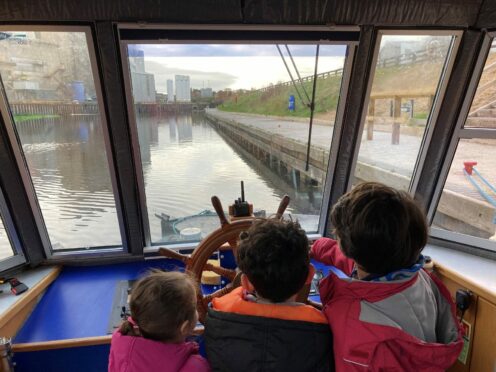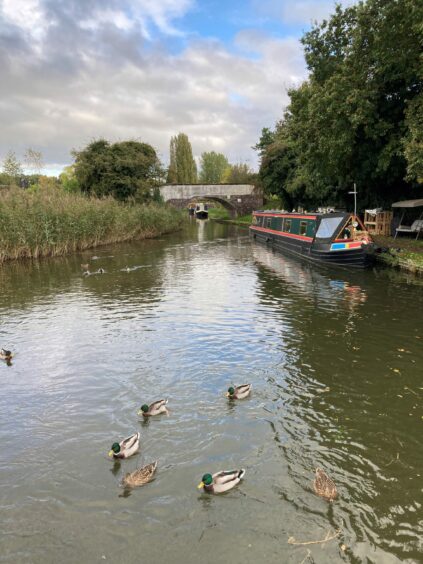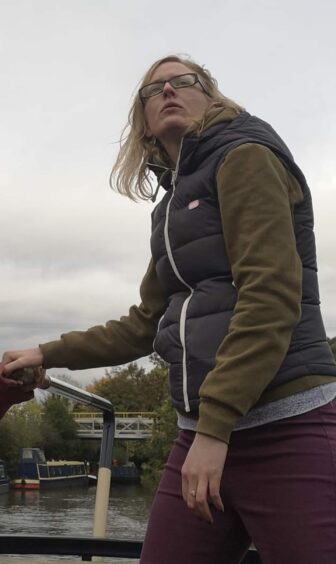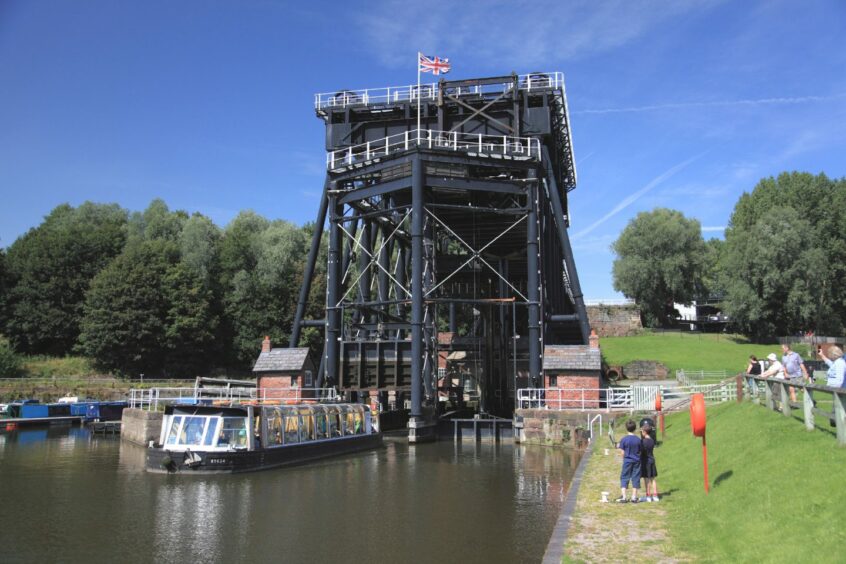
Left a bit, now right a bit, OK, straighten her up.” With those confidently delivered directions, we’ve safely navigated past our fellow canal boaters as we emerge from the second tunnel of the day.
The orders are given by my first mate. He’s nine years old, and taking to his new role like a duck to water.
Black Prince Holidays states on its website that no previous experience is needed to hire a canal boat – so it seems like the ideal adventurous getaway for first-timers like our group of three adults and three children. The company, which has nine holiday hire bases across England, Scotland and Wales, promises a British Marine Federation-accredited handover before letting us loose on the water.
Ian, our guide, is a former canal boat resident, so we are in good hands. His military background also means his hour-long induction is thorough but engaging, firm but with a humorous overtone to temper our nerves.
He assures us we’ll be fine as he waves us off – the adults slightly apprehensive, the children bursting with excitement.
Our weekend break from Acton Bridge in Cheshire begins with a two-and-a-half-hour journey along the Trent and Mersey Canal. Standing at the back of the boat, with one hand on the long handle, or tiller, we stay in first gear as we get our bearings. Even when we switch to top speed, we’re motoring along at about four miles an hour.
Ian advised us a good gauge is to travel at the speed of someone walking along the towpath – a canal boat holiday is meant to be enjoyed at a slow pace.
We get off to a shaky start as we end up with the rear of the boat wedged into the shallow edge of the canal – prompting a rush for the long poles stored on top of the vessel, which we use to push ourselves out from the bank. It’s the first of a few that day, as we get to grips with the steering (move the tiller left when you want to turn right and vice versa), negotiate tight corners or pass other narrowboats along the way.
By day two, with better spatial awareness and steering, we realise the turns aren’t really that tight and there is plenty of space between us and other boats. There is a blissful serenity at points where we seem to have the canal to ourselves, lush green foliage on either side, reeds so high we joke this might be what it’s like to travel through the Amazon rainforest, and silence but for birdsong and the gentle background hum of our engine.
The tunnels – some which you can see through, and others that are timed, meaning you can only proceed at a certain point in the hour – are daunting at first, but soon become the most anticipated part of the day for the youngest on board. Pitch dark but for our headlamp at the front, they make a suitably scary backdrop for telling ghost stories, as well as for contests to see who can produce the best echo.
It hadn’t occurred to the adults that travelling during the day would always require one of us to be out at the back, steering. So a good ratio of adults to children is advisable – with supervision on the front and back outdoor areas a must, and, of course, someone to make tea for the captain.
Our Duchess 6 boat is named Jessica Ellen – much to the children’s enjoyment as they affectionately declare on mooring up that “Jessica needs a rest for the night”.
At 69ft long and 6ft 6in wide, she sleeps six of us in three compartments but can fit eight when the eating area is transformed into another bedroom.
Narrowboats live up to their name so might not be for the claustrophobic but I’m pleasantly surprised by how spacious it feels, and with the heating on in the evening it’s cosy. We have two toilets and a shower, a small kitchen and a table with a seating area for meals and board games.
The company has a handy guide on its website of what to bring in terms of food, clothing and perhaps less obvious items like a large umbrella (a godsend if it rains while you’re steering) and a torch for evenings. Don’t forget food for the ducks, too.
Planning your route is advisable: have an idea of how long it might be until the next attraction, and, most importantly, time it so you moor up before dark.
While the boat’s kitchen is well-equipped, booking in to a pub en route in advance for at least one evening is a nice change of scenery, and allows for a well-deserved beverage after a day’s captain-ing.
At the 147-year-old Anderton Boat Lift, visitors can take a guided boat tour of the River Weaver before a trip in what the Canal and River Trust describes as “an incredible edifice”, likening it to a “giant, three-storey-high iron spider”.
The lift, reopened 20 years ago after restoration, was built in 1875 to move boats 50ft between the River Weaver and the canal – a job it still does today. The visitor centre, play park and maze are great spots to while away a few hours. The cafe also has a great margherita pizza.
The Dutton Stop Lock is the only one on our route and is described as the perfect “practice” lock. With only a few inches of difference in the water levels, we get the fun of opening the gates and steering into and out of the chamber.
It helps that a kind canal boat resident who happens to be nearby helps talk us through the process.
Along the route we are greeted by waves and smiles from fellow holidaymakers and others living on the canal. The gentle pace of life is appealing, and we all feel like we’re getting into the swing of it when we reach the final day of our short trip.
It’s simultaneously been an action-packed yet relaxing break, getting to grips with new skills but happily settling into life in the slow lane.
Arriving back at base, I ask the children to give their verdict. All three break into big smiles, with the eldest proudly proclaiming: “I’ve loved giving orders!”
P.S. A trip on the Anderton Boat Lift and river tour costs £13 per adult, £11 for under-25s, and children under three are free. It’s £37 for a family ticket (two adults and two children or one adult and three children)

Enjoy the convenience of having The Sunday Post delivered as a digital ePaper straight to your smartphone, tablet or computer.
Subscribe for only £5.49 a month and enjoy all the benefits of the printed paper as a digital replica.
Subscribe
 © Press Association Images
© Press Association Images © Press Association Images
© Press Association Images